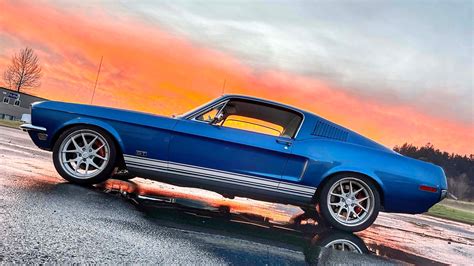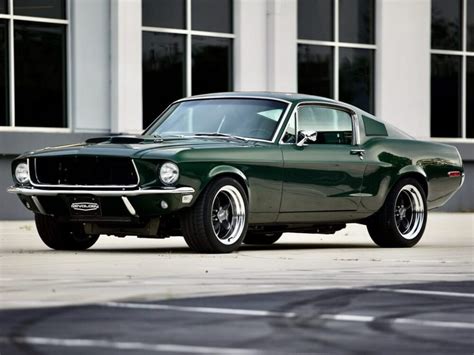
A disastrous pit stop abruptly ended Scott McLaughlin’s Indy 500 bid and injured four of his pit crew, turning his pole position start into a heartbreaking exit on Sunday. The incident occurred on lap 64 when McLaughlin, leading the race, came in for his first pit stop and appeared to lock his rear tires, causing the car to slide into the pit box and strike several crew members.
McLaughlin’s No. 3 Chevrolet, which had dominated the opening stages of the race, was subsequently retired due to the damage sustained, marking a devastating end to his and the team’s hopes. “I just feel sick for my guys,” McLaughlin said, visibly distraught after the incident. “I braked, and the rear locked. I tried to get off the brake, and it just kept locking. I turned right to try and miss the guys, but I just clipped them. I’m so gutted.”
The Penske team confirmed that four crew members were injured during the incident and were immediately evaluated by medical personnel. Three were treated and released from the infield care center, while one was transported to a local hospital for further evaluation. The exact nature and severity of their injuries were not immediately disclosed, but the team indicated they were stable and receiving the necessary care.
The incident immediately brought back memories of past pit-lane incidents at the Indy 500, underscoring the inherent dangers involved in the high-speed, high-pressure environment of IndyCar racing. Pit stops, which can make or break a race, are often executed in under ten seconds, requiring pinpoint precision and flawless coordination from the entire team.
McLaughlin had been a dominant force in the lead-up to the race, securing pole position with a record-breaking qualifying run and leading a significant portion of the opening laps. His car appeared to be the one to beat, making the pit stop incident all the more crushing for the team and its supporters.
The retirement marked a disappointing end to what had promised to be a historic day for McLaughlin and Team Penske. The incident also served as a stark reminder of the risks involved in motorsports and the importance of safety in all aspects of racing. The focus immediately shifted to the well-being of the injured crew members, with the racing community united in their concern and support.
The incident occurred during a critical phase of the race when drivers were beginning to settle into a rhythm and strategize for the long run. McLaughlin’s early dominance had established him as a clear contender, and his sudden exit dramatically altered the complexion of the race. The remaining drivers were left to navigate the changing track conditions and the increased pressure of competing for the lead.
The race continued under caution as safety crews attended to the scene and cleared the damaged car. The incident added another layer of drama to an already unpredictable Indy 500, leaving fans on the edge of their seats as the remaining drivers battled for the coveted title.
Detailed Breakdown and Analysis:
Scott McLaughlin’s Indy 500 nightmare unfolded with breathtaking speed and devastating consequences, transforming a promising day of racing into one marked by injury and disappointment. The polesitter’s misfortune began on lap 64, when he entered the pit lane for his first scheduled stop. The sequence of events that followed transpired within a matter of seconds but irrevocably altered the course of the race and left a lasting impact on the Team Penske crew.
As McLaughlin approached his pit box, he experienced what he described as a locking of the rear tires. This unexpected loss of control caused his No. 3 Chevrolet to veer off course, sliding sideways into the pit stall. The impact was forceful, striking several members of his pit crew who were positioned to execute the tire change and refueling.
The immediate aftermath of the incident was one of chaos and concern. Crew members were seen on the ground, clearly injured, while McLaughlin’s car sustained significant damage. The race was immediately placed under caution as medical personnel rushed to the scene to provide assistance. The focus quickly shifted from the competition on the track to the well-being of the injured crew members.
“I just feel sick for my guys,” McLaughlin said in a post-race interview, his voice filled with emotion. “I braked, and the rear locked. I tried to get off the brake, and it just kept locking. I turned right to try and miss the guys, but I just clipped them. I’m so gutted.” His words conveyed a deep sense of remorse and responsibility, reflecting the close bond between drivers and their pit crews.
Team Penske officials confirmed that four crew members were injured in the incident. Three were treated and released from the infield care center, while one was transported to a local hospital for further evaluation. While the specific nature of their injuries was not immediately disclosed, the team emphasized that they were receiving the best possible care. The incident served as a stark reminder of the inherent dangers associated with pit stops in IndyCar racing. These highly choreographed sequences are executed with incredible speed and precision, but they also involve significant risk.
Pit stops are a critical component of IndyCar racing strategy. Teams strive to complete them in under ten seconds, a feat that requires flawless coordination and split-second timing. The crew members, who work in close proximity to the speeding cars, are exposed to the risk of being struck by a vehicle or injured by flying debris.
The causes of pit-lane accidents can vary widely, ranging from mechanical failures to driver errors. In McLaughlin’s case, the locking of the rear tires appears to have been the primary factor. However, investigations are typically conducted to determine the precise sequence of events and identify any contributing factors.
McLaughlin’s early dominance in the race made the pit stop incident all the more devastating. He had secured pole position with a record-breaking qualifying run and led a significant portion of the opening laps. His car appeared to be exceptionally strong, positioning him as a clear contender for the victory. The sudden end to his race was a crushing blow to his team and his fans.
The incident also had a significant impact on the overall complexion of the race. McLaughlin’s retirement opened the door for other drivers to move up in the standings and contend for the lead. The remaining drivers had to adjust their strategies and navigate the changing track conditions, knowing that the margin for error had become even smaller.
The Indy 500 has a long and storied history, filled with moments of triumph and tragedy. Pit-lane accidents have been a recurring theme throughout the race’s history, serving as a constant reminder of the risks involved in motorsports. Safety measures have been continuously improved over the years, but the potential for accidents remains ever-present.
In the wake of the incident, the racing community rallied around McLaughlin and the Team Penske crew. Drivers, teams, and fans expressed their concern and support, underscoring the sense of camaraderie that exists within the sport. The focus remained on the well-being of the injured crew members, with hopes for their swift and full recovery.
The Indy 500 is more than just a race; it is a spectacle that captivates millions of viewers around the world. The combination of high speeds, daring maneuvers, and intense competition creates an atmosphere of unparalleled excitement. However, the incident involving McLaughlin served as a sobering reminder of the risks that are inherent in the sport.
As the race continued, the remaining drivers battled for the coveted title, knowing that they were carrying the weight of responsibility to represent their teams and their sponsors. The Indy 500 is a test of endurance, skill, and mental fortitude, and the drivers who make it to the finish line are those who can overcome adversity and maintain their focus under pressure.
The aftermath of McLaughlin’s pit stop disaster will likely prompt further discussions about safety measures in pit lane. IndyCar officials and team engineers are constantly seeking ways to improve the safety of pit stops, whether through technological advancements or procedural changes. The goal is to minimize the risk of accidents and protect the well-being of the crew members who are essential to the success of the teams.
The Indy 500 is a race that is steeped in tradition and history. It is a race that captures the imagination of racing fans around the world. But it is also a race that demands respect and vigilance. The incident involving McLaughlin serves as a reminder of the importance of safety and the need for continuous improvement in all aspects of motorsports.
The incident also highlights the psychological toll that racing can take on drivers and crew members. The pressure to perform at the highest level, combined with the inherent risks of the sport, can create a stressful and demanding environment. Mental health and well-being are increasingly recognized as important aspects of racing, and teams are providing resources and support to help their members cope with the pressures of competition.
As the racing community reflects on the events of the Indy 500, the focus will remain on the well-being of the injured crew members and the lessons that can be learned from the incident. The goal is to ensure that the sport remains as safe as possible while preserving the excitement and tradition that make it so captivating. The Indy 500 is a race that will continue to evolve and adapt, but its commitment to safety will always be a top priority.
Further Analysis and Context:
The incident involving Scott McLaughlin and his pit crew at the 2024 Indy 500 raises several crucial questions about pit stop safety, driver responsibility, and the overall risks inherent in motorsports. While the immediate focus was on the well-being of the injured crew members, the event also prompts a deeper examination of the factors that contribute to pit lane accidents and the measures that can be taken to prevent them.
One of the key issues is the speed and precision required during pit stops. IndyCar teams strive to complete these operations in under ten seconds, a feat that demands flawless coordination and split-second timing. The crew members, who work in close proximity to the speeding cars, are exposed to a high degree of risk.
The mechanics involved in a pit stop have distinct roles, including the tire changers, fueler, and jack operators. Each member’s movements must be perfectly synchronized to ensure that the operation is completed quickly and safely. Any misstep or error can have serious consequences, as demonstrated by the incident involving McLaughlin.
Driver responsibility is another critical aspect of pit stop safety. Drivers must exercise extreme caution when entering and exiting the pit lane, particularly in crowded conditions. They must be aware of their surroundings and react quickly to any unexpected events. In McLaughlin’s case, the locking of the rear tires appears to have been the primary cause of the accident. However, investigations will likely examine whether any other factors contributed to the incident, such as the driver’s speed or the condition of the tires.
Technological advancements have played a significant role in improving pit stop safety over the years. Electronic speed limiters, for example, help drivers maintain a safe speed in the pit lane. Advanced braking systems and traction control devices can also help prevent accidents. However, technology alone cannot eliminate the risk entirely. Human error and mechanical failures can still occur, leading to unforeseen consequences.
The incident involving McLaughlin also highlights the importance of proper training and preparation for pit crew members. Teams invest significant resources in training their crews to perform pit stops safely and efficiently. This training includes practice drills, safety protocols, and emergency procedures. Crew members must be physically fit and mentally prepared to handle the demands of the job.
The safety of pit stops is a shared responsibility among drivers, teams, and racing officials. IndyCar officials regularly review safety procedures and implement changes as needed. Teams are responsible for ensuring that their equipment is in good working order and that their crew members are properly trained. Drivers are responsible for driving safely and following all regulations.
In the aftermath of the incident, IndyCar officials may consider additional safety measures, such as increasing the size of pit boxes, implementing stricter speed limits, or requiring additional training for pit crew members. The goal is to reduce the risk of accidents while maintaining the excitement and competitiveness of the sport.
The Indy 500 is a race that is steeped in tradition and history. It is a race that captures the imagination of racing fans around the world. But it is also a race that demands respect and vigilance. The incident involving McLaughlin serves as a reminder of the importance of safety and the need for continuous improvement in all aspects of motorsports.
The psychological impact of such incidents should not be underestimated. Both drivers and pit crew members may experience anxiety, stress, and even post-traumatic stress disorder (PTSD) following a pit lane accident. Teams are increasingly recognizing the importance of providing mental health support to their members. This support may include counseling, therapy, and other resources to help individuals cope with the emotional aftermath of a traumatic event.
The incident will undoubtedly lead to a thorough review of pit stop procedures and safety measures in IndyCar racing. While the sport has made significant progress in improving safety over the years, the incident serves as a reminder that there is always room for improvement. The goal is to ensure that the Indy 500 and other IndyCar races are as safe as possible for all participants.
Frequently Asked Questions (FAQ):
Q1: What exactly happened to Scott McLaughlin during his pit stop at the Indy 500?
A: Scott McLaughlin experienced a rear tire lock-up as he entered the pit lane on lap 64. This caused his car to slide into his pit box, striking four members of his pit crew. The incident resulted in injuries to the crew members and significant damage to McLaughlin’s car, forcing him to retire from the race.
Q2: How many pit crew members were injured in the incident, and what is their condition?
A: Four pit crew members were injured. Three were treated and released from the infield care center, while one was transported to a local hospital for further evaluation. The team indicated that all injured members were stable and receiving the necessary care. Specific details regarding the nature and severity of their injuries were not immediately disclosed.
Q3: What was Scott McLaughlin’s reaction to the pit stop incident?
A: McLaughlin expressed deep remorse and concern for his injured crew members. He stated that he felt “sick for my guys” and explained that he tried to avoid hitting them but was unable to prevent the collision due to the rear tire lock-up. He described himself as “gutted” by the outcome.
Q4: What is the significance of pit stops in IndyCar racing, and why are they so risky?
A: Pit stops are a critical component of IndyCar racing strategy, often determining the outcome of a race. Teams aim to complete pit stops in under ten seconds, requiring precise coordination and split-second timing. However, the close proximity of crew members to speeding cars and the high-pressure environment make pit stops inherently risky, with the potential for accidents and injuries.
Q5: What steps are being taken to improve pit stop safety in IndyCar racing following this incident?
A: Following the incident, IndyCar officials and team engineers are likely to review safety procedures and consider additional measures to improve pit stop safety. These measures may include increasing the size of pit boxes, implementing stricter speed limits in the pit lane, requiring additional training for pit crew members, and exploring technological advancements to enhance safety. The goal is to minimize the risk of accidents while maintaining the excitement and competitiveness of the sport.
The incident casts a shadow over what was shaping up to be a potentially historic day for McLaughlin and Team Penske, emphasizing the ever-present dangers in the sport.









